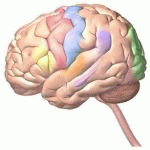Neurology
|
23 april 2014 11:48:27 |
| Visuomotor behaviours when using a myoelectric prosthesis (Journal of NeuroEngineering and Rehabilitation) |
|
Tweet Background:
A recent study showed that the gaze patterns of amputee users of myoelectric prostheses differ markedly from those seen in anatomically intact subjects. Gaze behaviour is a promising outcome measures for prosthesis designers, as it appears to reflect the strategies adopted by amputees to compensate for the absence of proprioceptive feedback and uncertainty/delays in the control system, factors believed to be central to the difficulty in using prostheses. The primary aim of our study was to characterise visuomotor behaviours over learning to use a trans-radial myoelectric prosthesis. Secondly, as there are logistical advantages to using anatomically intact subjects in prosthesis evaluation studies, we investigated similarities in visuomotor behaviours between anatomically intact users of a trans-radial prosthesis simulator and experienced trans-radial myoelectric prosthesis users.
Methods:
In part 1 of the study, we investigated visuomotor behaviours during performance of a functional task (reaching, grasping and manipulating a carton) in a group of seven anatomically intact subjects over learning to use a trans-radial myoelectric prosthesis simulator (Dataset 1). Secondly, we compared their patterns of visuomotor behaviour with those of four experienced trans-radial myoelectric prosthesis users (Dataset 2). We recorded task movement time, performance on the SHAP test of hand function and gaze behaviour.
Results:
Dataset 1 showed that while reaching and grasping the object, anatomically intact subjects using the prosthesis simulator devoted around 90% of their visual attention to either the hand or the area of the object to be grasped. This pattern of behaviour did not change with training, and similar patterns were seen in Dataset 2. Anatomically intact subjects exhibited significant increases in task duration at their first attempts to use the prosthesis simulator. At the end of training, the values had decreased and were similar to those seen in Dataset 2.
Conclusions:
The study provides the first functional description of the gaze behaviours seen during use of a myoelectric prosthesis. Gaze behaviours were found to be relatively insensitive to practice. In addition, encouraging similarities were seen between the amputee group and the prosthesis simulator group. |
| 89 viewsCategory: Neurology |
 Putative role of protein kinase C in neurotoxic inflammation mediated by extracellular heat shock protein 70 after ischemia-reperfusion (Journal of Neuroinflammation) Putative role of protein kinase C in neurotoxic inflammation mediated by extracellular heat shock protein 70 after ischemia-reperfusion (Journal of Neuroinflammation)Biomechanical and functional variation in rat sciatic nerve following cuff electrode implantation (Journal of NeuroEngineering and Rehabilitation) 
|
| blog comments powered by Disqus |
MyJournals.org
The latest issues of all your favorite science journals on one page
The latest issues of all your favorite science journals on one page



